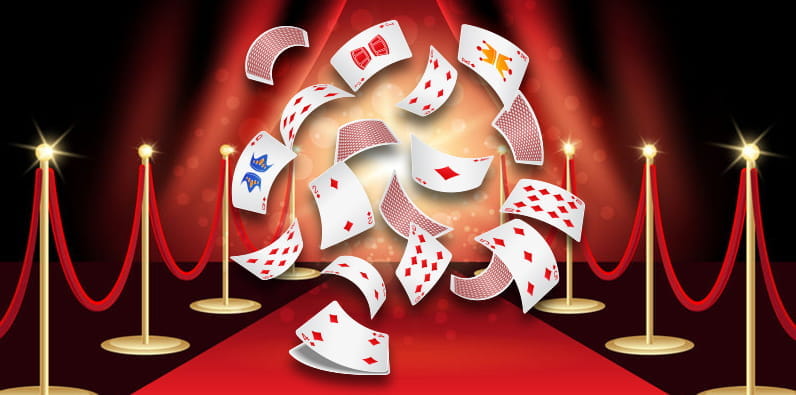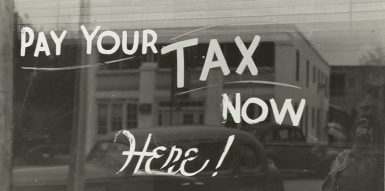World’s Most Famous Card Counters – The Initial Hall of Famers
If you’ve played any type of card game in your life, then chances are you’ve been tempted to cheat. Whether it’s stacking the deck or simply keeping cards in your sleeves, you must’ve done it. At least once. Now, imagine being able to do something similar but on a much bigger scale and with your mind. In the history of games, there have been people, who are incredible card counters and have managed to win millions because of their skills. In the following paragraphs, we’ll have a look at the most famous among them, and we promise it’s a great read!
How it Started
There’s a fair number of movies and articles dedicated to brilliant mathematicians and masterminds who can predict the outcome of a game of cards. They manage to do so by counting the cards that have been already dealt by the dealer and trying to determine the next one. By doing that the players have an edge over the house, especially when we talk about blackjack and masterful strategies.
The Fantastic Seven
The Blackjack Hall of Fame was introduced in 2002, by Barona Casino. The San Diego based casino decided that it is time to pay their respect to the brightest among gamblers. Initially, there was a selection of 21 elite candidates, all of which were skilled players, authors, and blackjack pros. In the end, they chose 7 while currently, the list tops 24 Hall of Famers, with the latest member being Rob Reitzen who joined the elite rooster in 2019.
In the following paragraphs, we will introduce you to the incredible stories of the original seven members and arguably the most famous card counters. Without further ado, let’s dive into the anticipated list of the founding members of cards counting Blackjack Hall of Fame.
Edward Thorp – The Father of Card Counting

Back in the day, when there was no internet and information wasn’t so freely available, there was a brilliant mathematician who was about to take the gambling world by storm. Born in 1932 in Chicago, Illinois, Edward Thorp is among the most recognisable blackjack strategists in the world.
His passion for the game was ignited by research he read on the Kelly criterion which helped him develop his methodology. In the following years, he devoted himself to researching and applying the probability theory to blackjack.
Dr Thorp was arguably the first person to beat the eternal cards game and completely revolutionised it forever. He even published a book in 1962 called Beat the Dealer which became a bestseller with nearly 1 million copies sold. The ‘bible’ for bettors would inspire many to pursue a professional gambling career, and soon you’ll understand how it connected other legends on our list.
His immense success has accredited him the ‘Father of Card Counting’ status and secured him an honourable place in the Blackjack Hall of Fame. In addition to his significant achievements, Dr Thorp has successfully applied his probability and statistics knowledge in the financial markets. At the time of writing, Edward Thorp has an estimated net worth of $800 million and is among the richest gamblers in the world.
Thomas Hyland – The Man Who Started it All

Shortly after Edward Thorp paved the way for revolution among blackjack skilled players, his steps were followed by Thomas Hyland. He began his journey in the ’70s by playing poker and backgammon with his college friends in Ohio.
Not particularly interested in math, his voila moment came when he read the book Playing Blackjack as a Business by Lawrence Revere. Realising the potential of these strategies, Hyland figured that he would make a living out of them and formed a card counting team in 1979.
At first, Hyland and his roommate started playing with just about $1000, but soon they recruited two more card counters. Each of the blackjack enthusiasts had to put in an initial investment of $4000. The money was soon multiplied, and the blackjack card counting team was killing it in the Atlantic City casinos and shortly after all over the world.
Thereafter, the New Jersey king assembled more members into his team, each of whom was loyal and dedicated to the cause. Tommy Hyland and his teammates employed a variety of blackjack counting techniques such as Ace Sequencing and Shuffle Tracking. In an interview he gave, Hyland stated that through the years he’s had nearly 200 people coming and going from his blackjack team making it the longest standing in history.
As you can imagine, throughout the decades of playing, it wasn’t all rainbows and sunshine for the blackjack card counting team. The real struggle began in 1994 when a few of the professional gamblers were arrested in Ontario, Canada and taken to court. The outcome of the lawsuit was extraordinary, so if you’re curious to learn what happened, please read the article ’till the end.
Despite his old age, Thomas Hyland is still an active blackjack card counter and one of the first 7 members of the Blackjack Hall of Fame.
Al Francesco – The Father of Team Play Concept

Thomas Hyland might hold the title for owning the longest standing blackjack counting team in history, however, he wasn’t the inventor. The concept was developed by Al Francesco who’s also the inventor of the advanced strategies ‘Big Player Concept’ and ‘The Drop’.
After reading Thorp’s book Beat the Dealer in 1963, the Indiana born legend was so inspired that he decided to start his professional gambling career. At first, Francesco wasn’t good at counting cards and said that he had regular headaches.
As soon as he got a grasp of the strategy called ’Ten Count’ he quickly turned into a nightmare for the Reno and Tahoe based casinos. Francesco was winning thousands of dollars in a period of almost two years before his issues began. He was banned from almost all casinos which forced him to take a break from gambling.
Throughout his years of retirement, Al Francesco had enough time to reflect and explore a new plan of action. Once again, he was influenced by a book, but this time the same book which will later inspire Thomas Hyland – Playing Blackjack as a Business. By then, the casinos have updated the single deck blackjack into four decks in an attempt of making it harder for card counters.
Realising the challenges, Francesco set into motion his ingenious plan of creating blackjack card counting teams. He recruited his first three partners and, in 1971 the Big Player Concept was born. Expanding to up to 21 blackjack card counters, Al and his teammates were flourishing. They’d go betting around the world and bringing home hundreds of thousands of dollars profit year after year.
Until Ken Uston, who at the time was a valuable part of the venture, decided to jeopardise his team and released a book in 1977 called The Big Player. The book was a complete revelation of every scheme that Al and the blackjack card counters were doing. That was the end of Big Player Concept and you can imagine how furious everyone was at Ken for ruining their brilliant project.
Although this book ended the Big Player project, it became a source of inspiration for the Hyland Team and the MIT team, on which is based the movie 21. About 20 years later, Al Francesco came up with the Ace Sequencing technique which would later be used by many legends included in our list. In 2002, Big Al has also imprinted his name into the Hall of Fame with his exemplary skills and ingenious innovations.
Ken Uston – The Celebrity

As we already mentioned in the previous paragraph, Ken Uston was one of the pillar members of Big Franc. Before their paths crossed, however, he was an MBA Harvard graduate, working as a stock exchange executive. Arguably one of the players with the highest IQs, Uston didn’t start gambling until he was in his 30s.
As you might already guess, his life turned around when he read Beat the Dealer and gradually started spending more time at the casinos. Kenneth Senzo Usui, as is his real name, has quickly grown affection in blackjack card counting and realised that he was great at it.
Crunching numbers was natural to him and helped him a lot in mastering every technique in the book. However, the pinnacle of Uston’s gambling career came when he met Al Francesco and joined his notorious card counting team.
Taken under Francesco’s wing, Ken quickly became a vital part of the project and was later nicknamed The Master of Blackjack due to his immense card counting skills. Uston was living in his apogee for a few years, making millions with his band and spreading his name wide. Until he decided to turn his back on Al Francesco and his teammates and exposed what they were doing with his first book The Big Player.
That marked the end of their mutual venture and as most betting professionals thought the end of card counting as they knew it. But as it turned out it wasn’t. In 1979 Uston formed his own card counting team and won $50,000 in just 10 days at Atlantic City. However, a few months later he was barred from virtually all casinos and decided to sue Resorts International.
Ken became the first professional gambler to ever win a lawsuit against a casino and changed the course of the blackjack industry forever. In order to battle skilled players, the casinos introduced six-decks and automated shuffling machines into the game. In the following years, Uston totally spiralled out of control, obtaining a controversial lifestyle with loads of drugs and alcohol. He went on several TV shows and released two more books; Two Books on Blackjack and Million Dollar Blackjack.
The end of his road came in 1987 when Ken was found dead in his apartment in Paris. The official cause of his death was a heart attack, although, there was no autopsy performed to confirm. Admittedly, that resulted in many conspiracy theories which suggest that he was assassinated as he was an infamous troublemaker who made a lot of enemies. Nevertheless, his legacy and contribution to the betting world are forever perpetuated in the Blackjack Hall of Fame.
Peter A. Griffin – The Observer

Next on our list is Peter A. Griffin. Born in New Jersey in 1937, he was an MBA graduate from the University of California and a professor of mathematics. Similarly to Ken Uston, Griffin was also a late bloomer into blackjack.
He started his obsession with the game in the 70s while conducting various researches on different strategies and techniques. Griffin would spend a lot of time in Atlantic City and Vegas, observing card counters and taking notes. At one point he gathered so much statistical data that he was able to determine that the average blackjack player has a disadvantage of 2% compared to the house.
In 1979, Peter released his book The Theory of Blackjack which was widely recognised and acclaimed by the blackjack community. Perhaps the humblest man on our list Griffin never went on to make a living out of his skill. Unlike the other legends, he wasn’t interested in the money and the high-class lifestyle, though his knowledge and card counting expertise were remarkable. His true passion remained mathematics and teaching, and he was never under the spotlight like Ken Uston. In 1998, Griffin died from prostate cancer, but his name is forever carved in the Blackjack Hall of Fame.
Stanford Wong – The Professional

Born under the name of John Ferguson in 1943, Stanford Wong, is a brilliant player, statistician and financier. He acquired his PhD at Stanford University, and it is regarded that this is the origin of his nickname. When he was only 19, he came across Thorp’s book.
As soon as he turned 21, he started spending a lot of time in casinos, while never giving up on his education. Wong quickly established himself as one of the best players on a single deck blackjack, but as the casinos made the rules tougher, he needed to adapt to the four-decks blackjack.
Wong spent a long time trying to figure out a new system which will beat the game of 21. After several years, he finally made a breakthrough and released his first book on the subject in 1975 – Professional Blackjack. It is safe to say that Wong was living a complicated dual life. While he was gambling and publishing books, they were all under his pseudonym as he didn’t want to hurt his teaching career. In 1980, he originated the term ‘Wonging’ which means waiting until positive counts are being dealt.
He believes that the game evolves constantly which demands perpetual conducting of new studies. Even today, Stanford Wong is actively publishing about blackjack strategies and manages his own website and owns a publishing company called Pi Yee Press. He has released over 20 books on several gambling-related subjects such as; craps, video poker, and sports betting. It’s not a surprise that Wong’s immense contribution to the betting industry made him a proud member of the Hall of Fame.
“I found the game to be a huge challenge when I was young. But, today, I’ve mastered the challenge, and I no longer need the money. That’s the thing about blackjack, you have to be hungry to win at it. You have to go to casinos at four in the morning when the tables are empty, and you have to go for it. I no longer have the desire to do that.”
Arnold Snyder – The Pivotal Figure

Our fantastic seven will be completed by yet another fascinating author, blackjack pro, and an advocate for the rights of skilled players, who was born in 1948 in Detroit, Michigan. His name is Arnold Snyder and it’s safe to say that he was the pivotal link between four of the initial seven hall of famers and soon you’ll understand why.
Arnold is among the top-rated authors on the gambling-related subject with over 25 books under his belt. His first book was released to the public in 1980 called The Blackjack Formula and was a revolutionising discovery.
One of the importance of the ‘Deck Penetration’ concept in card counting. A couple of years later he released his second book Blackbelt in Blackjack. Snyder has also founded the famous Blackjack Forum in 1981 where many legends would come and contribute as guest authors and interviewees.
The list includes the likes of Tommy Hyland, Peter Griffin, Al Francesco, and Stanford Wong, who had his own newsletter called Current Blackjack News and is still actively managing it. In addition to his authorial contribution to the gambling community, Snyder played a vital role in Tommy Hayland’s blackjack counting team. At the time, Arnold was older and more experienced and was mentoring Hayland.
With his vast knowledge, Snyder helped Thomas in the establishment of the longest-running team in the history of the game. Later, he would have another short joint venture with Al Francesco’s when they’ve created their own CRAPS team. That endeavour didn’t last for long, however, and they had to part ways. In 1994, Snyder played a vital part in the lawsuit, against Hayland’s blackjack team. As we promised earlier, now we’re going to explain to you what happened during the trial.
Several days were spent in court, and numerous detailed explanations were given on what ace sequencing is and why it should not be considered an illegal activity. In the end, the judges ruled out the accusation of Canadian based Windsor Casino, stating that what these famous card counters were doing is merely a superior level of skills. Long story short, thanks to Snyder’s pivotal testimony for the defence, no one went to prison and they won the lawsuit. So, if you also want to try your luck and test your blackjack skills, go ahead and pick an operator from our list of top Michigan online casino sites.
MIT Blackjack Team
Unusual, yet massively successful, the squad of trained blackjack card counters gained legendary status on account of their well-executed strategy. With Bill Kaplan – a Harvard MBA graduate – calling the shots, a team of MIT students and graduates was assembled. The foray turned into a constant income stream as the team kept winning thousands of dollars every day at the blackjack tables. That made everyone on the squad all the more popular and also led to a massive investment in a new company called “Strategic Investments”. The goal was literally to train new recruits how to count cards in exchange of a share of their winnings.
Four Horsemen of Blackjack
In 1957, the book “Playing Blackjack to Win” came out, just a few years before Thorp’s book was published. The authors’ names are Herbert Maisel, James McDermott, Roger Baldwin, and Wilbert Cantey. While not that sophisticated, the book had no analogue back in the day, so a lot of readers took to the simple strategy of teaching them how to count cards. A system more so than a strategy, what that book made available to the public is mathematically correct, despite the fact, computer simulations weren’t still a thing. This isn’t a surprise because all four authors were illustrious mathematicians. Soon after the book came to popularity the authors thereof became known as “The Four Horseman of Blackjack” aka “The Four Horsemen of Aberdeen”. Despite being so impactful, the authors admit they stand no chance against the house in the long haul.
Ben Affleck
He might not be the Batman of blackjack but he certainly is a rich boy and knows how to play the game. The famous actor was prohibited from entering some Las Vegas casinos. Official confirmation that he was counting cards never came out. However, in 2014 Ben Affleck was banned from the Hard Rock Hotel & Casino in Las Vegas. By his own admission, he was in the process of learning blackjack strategies at that time. Though nobody pressed charges against the Hollywood actor, the accident isn’t something that would look pretty in his portfolio.
Final Summation
In their minds, all those famous card counters are noble and ethical people who are following the rules. Doing math in your head should not be punished by the law. And few of those legendary players actually managed to prove in the court. There’re many players who’ve lost their families and houses to irresponsible gambling, and skilled players just wanted to prevent that from happening to them which they did very successfully. What is your take on card counting? Do you consider it an unethical activity that should be punished?



